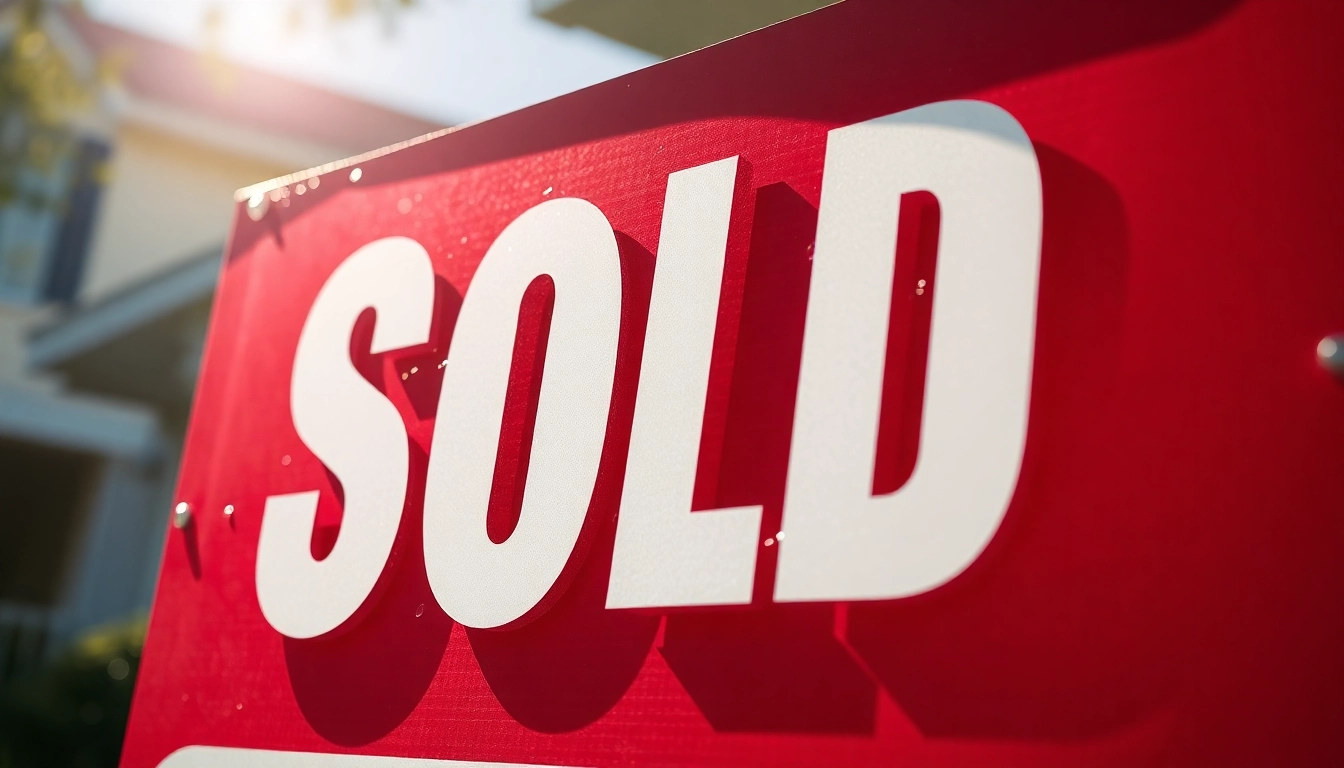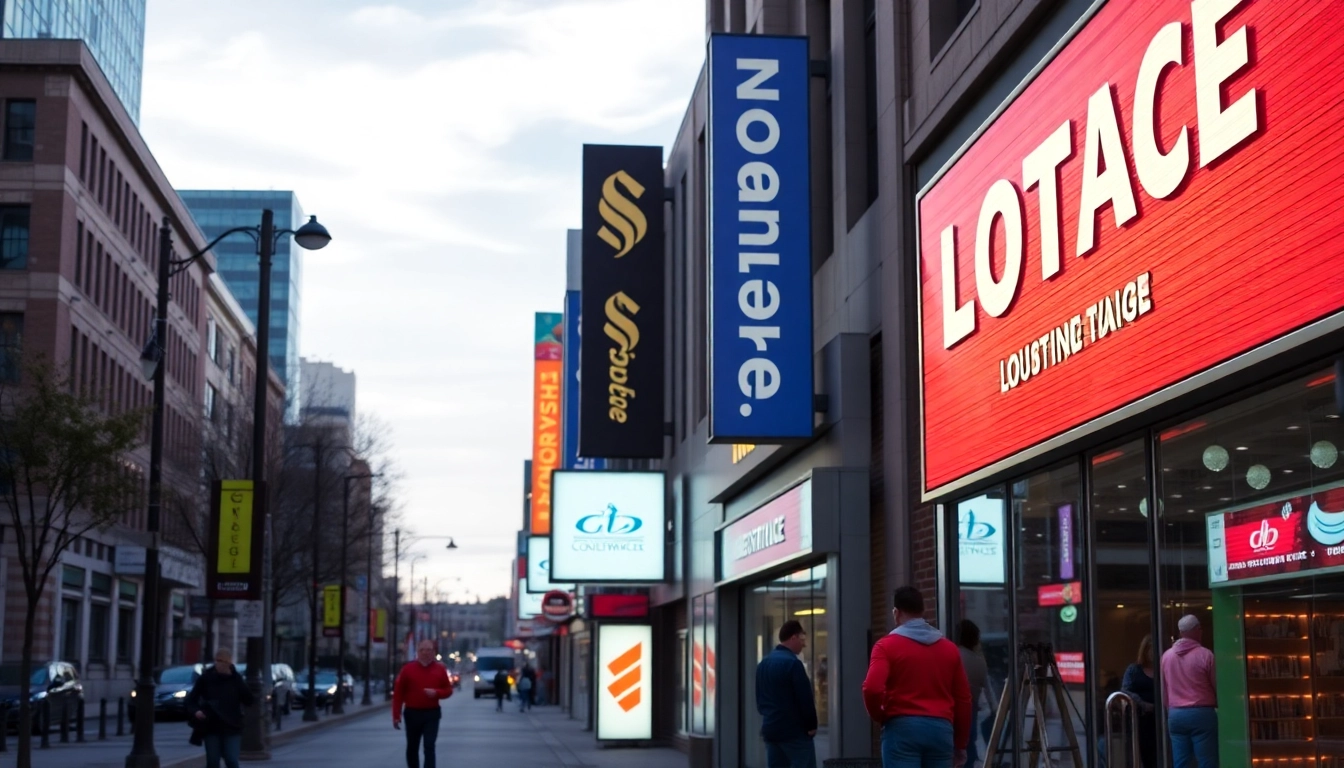Understanding the Importance of Sold Signs in Real Estate
In the competitive world of real estate, visual cues are essential for marketing and establishing credibility. Among these, the sold sign stands out as a powerful tool to announce successful property transactions and attract future clients. Sold signs do more than just mark a sold property; they serve as marketing assets that bolster branding, create social proof, and generate leads. Recognizing their importance is the first step toward leveraging them effectively in your real estate strategy.
Sold signs serve a multifaceted role in property marketing. They act as tangible indicators of success, signaling to neighbors and passersby that your agency is active and successful. This visibility increases brand awareness and demonstrates a proven track record to potential clients. Additionally, they help create a sense of urgency and legitimacy for prospective buyers, illustrating that a property has been sold and potentially guiding future negotiations. As a result, well-designed and strategically placed sold signs are integral to establishing a solid reputation in real estate markets.
Role of Sold Signs in Property Marketing
The strategic placement of sold signs reinforces a real estate agent’s or agency’s visibility within the local community. When a property sells, placing a prominently visible signed board not only celebrates the transaction but also enhances the agent’s credibility. It signals to other homeowners and prospective sellers their active and successful involvement in the market. This social proof often leads to increased inquiries and new listings.
Moreover, in neighborhoods with numerous sales, a series of attractive sold signs can create a ripple effect, establishing the agent as the go-to professional for local transactions. These signs function as silent eloquent ambassadors of your business, working tirelessly 24/7 to attract attention and new business opportunities. Additionally, for buyers, seeing multiple sold signs from the same agent can suggest reliability and trustworthiness, ultimately translating into more listings and faster sales.
What Makes a Sold Sign Effective?
The efficacy of a sold sign hinges on several key factors. First, visibility is paramount. The sign should be large enough to be seen from a distance, with bold, legible text that communicates its message instantly. Second, the design elements—color schemes, branding, and layout—must work harmoniously to catch the eye and reinforce brand recognition. Third, placement is critical; signs should be positioned where they face maximum foot and vehicular traffic, ideally in close proximity to the property or at busy intersections.
Furthermore, a sold sign must be durable to withstand various weather conditions, especially when placed outdoors for extended periods. The message should be clear, concise, and professional, avoiding clutter that could detract from the core message. Incorporating branding elements such as logos and contact information enhances recognition and facilitates lead conversion. Ultimately, effectiveness is achieved through a combination of thoughtful design, strategic placement, and robust materials that stand the test of time.
Common Misconceptions about Sold Signs
Many misunderstand the true value and purpose of sold signs. One common misconception is that they are purely decorative or serve only to mark a property as sold. In reality, they are strategic marketing tools that can significantly impact business growth if used correctly.
Another misconception is that the immediate placement of a sold sign is always necessary upon closing. Some argue that it might devalue a property or disrupt the privacy of the seller. However, timely placement can maximize marketing impact, and privacy concerns can be mitigated through customized or partially obscured signs.
Finally, some believe that any sign will do—simply putting a sign up is enough. In contrast, professional-grade signs with customized branding and high-quality materials communicate credibility and professionalism, leading to better results. Overcoming these misconceptions requires understanding the strategic role of signage in building reputation and generating leads.
Design Elements of High-Impact Sold Signs
Color Schemes That Attract Attention
Color plays a vital role in the visibility and emotional impact of sold signs. Bright, contrasting colors such as red, yellow, and black are traditionally used because they capture attention quickly. For example, a bright red “SOLD” overlay against a white or dark background ensures high visibility and instant recognition.
However, color choices should align with your branding, ensuring consistency across all marketing materials. Utilizing color psychology can influence viewer perception—blue connotes trust and professionalism, while green indicates growth and success. Combining these with high-contrast backgrounds ensures the sign stands out in both daylight and low-light conditions.
Typography and Readability Tips
Clear, bold typography is essential for conveying the message effectively. Use sans-serif fonts like Helvetica, Arial, or Futura for their modern, straightforward appearance, which enhances readability from a distance.
Text should be large enough to be read easily from at least 10-20 feet away, minimizing clutter by limiting the message to essential information—such as “SOLD,” the agent’s logo, and contact details. Maintaining consistent font size and style throughout the sign helps reinforce professionalism. Additionally, choose high-contrast color combinations to maximize legibility, even in adverse lighting conditions.
Materials and Durability Considerations
Outdoor sold signs must withstand weather elements such as rain, wind, UV exposure, and temperature fluctuations. Common durable materials include corrugated plastic, aluminum, and weather-resistant vinyl. Corrugated plastic signs are lightweight, cost-effective, and highly resistant to moisture and UV rays, making them popular among real estate professionals.
For longer-lasting signage, consider thicker gauge aluminum or reflective vinyl, especially if signs will be displayed for extended periods or in high-traffic areas. Reinforced mounts and UV coating further enhance longevity. Investing in quality materials ensures that your signs maintain professional appearance and effectiveness over time, reducing replacement costs.
Customization and Branding for Sold Signs
Using Logos and Contact Info Effectively
Incorporating your agency logo and contact information directly into the sold sign helps reinforce brand visibility and facilitates immediate connections. Position the logo prominently, ideally in a corner or centrally, ensuring it is easily identifiable without overshadowing the main message.
Contact info should include a phone number, website, or QR code for quick access. Use simple, legible fonts and avoid cluttering the sign with too much information. Consistent branding across signs, including color schemes and logos, builds trust and recognition among local markets.
Personalized vs. Generic Sold Signs
Personalized signs often feature the agent’s name, photo, or a custom message, making them more memorable and personal. For example, a sign that says “Sold by John Smith” adds a human touch that resonates with potential clients.
Generic signs, while more economical, may lack the personal branding advantages but are suitable for large-volume campaigns or when multiple agents share branding assets. The decision depends on your marketing objectives and budget. Personalized signs generally yield higher brand recall and lead generation, especially when combined with professional design.
Integrating Branding for Maximum Impact
Effective branding integration involves maintaining visual consistency across all signage and marketing channels. Use cohesive color schemes, logos, and messaging styles to reinforce your brand identity. High-quality custom signs that reflect professionalism can differentiate you from competitors and leave a lasting impression on both clients and prospects.
Adding a tagline or unique selling proposition (“Your Local Expert,” “Fast & Reliable Service”) can further strengthen your branding message. Remember, every element should work synergistically to build trust and motivate clients to choose your services.
Placement Strategies to Maximize Visibility
Optimal Locations for Sold Signs
Strategic placement maximizes exposure. The primary goal is to position signs where they are clearly visible to foot and vehicular traffic. Common optimal locations include:
- Front yards of the property
- The property’s main driveway or sidewalk access
- At busy intersections near the property or within the neighborhood
- Along major roads or avenues with high traffic volume
In addition to front line placement, some agents place signs in highly trafficked community areas, such as shopping centers or parks, if permitted legally and by local regulations. Proper placement ensures maximum visibility during peak hours, capturing the attention of the largest audience.
Timing and Legal Considerations
Timing is critical. Signs should be erected promptly once the house is under contract or sold, ensuring the market perceives active listing activity. Many municipalities have regulations regarding sign placement, size, and duration of display. It is essential to familiarize yourself with local ordinances to avoid violations that could result in fines or removal.
Clear understanding of HOA restrictions, signage permits, and property-specific regulations will help you avoid legal pitfalls. When in doubt, coordinate with local authorities or property owners to secure necessary permissions.
Using Digital Tools to Support Physical Signage
Combining physical sold signs with digital marketing tools can amplify your results. For example, QR codes embedded on signs enable passerby to instantly access property details or your contact information via their mobile devices. Location-based social media advertising can target communities with recent sold signs, further enhancing your visibility.
Using GPS mapping apps and signage management platforms allows for strategic deployment and tracking of signage campaigns, ensuring your efforts are optimized for maximum exposure and impact.
Measuring Success and Improving Your Sign Strategy
Tracking Leads Generated by Sold Signs
Incorporating unique identifiers such as QR codes or specific contact numbers for each sign helps track leads originating from signage. Monitoring inquiries and conversions linked to these identifiers provides data on signage effectiveness and guides future placement decisions.
Gathering Customer Feedback
Post-sale surveys or informal feedback from clients and neighbors can offer insights into how signs are perceived. Questions might focus on visibility, design appeal, and overall impression. This feedback helps refine your signage approach, improving aesthetics and messaging.
Adjusting Signage Tactics for Better Results
Data analysis of signage performance will reveal which strategies are most effective. For example, if signs placed in high-traffic areas outperform others, allocate more resources accordingly. Consider testing different designs, colors, or messaging to optimize engagement.
Regularly reviewing and updating your signage strategy ensures continuous improvement, keeping your marketing fresh and competitive in an evolving marketplace.



